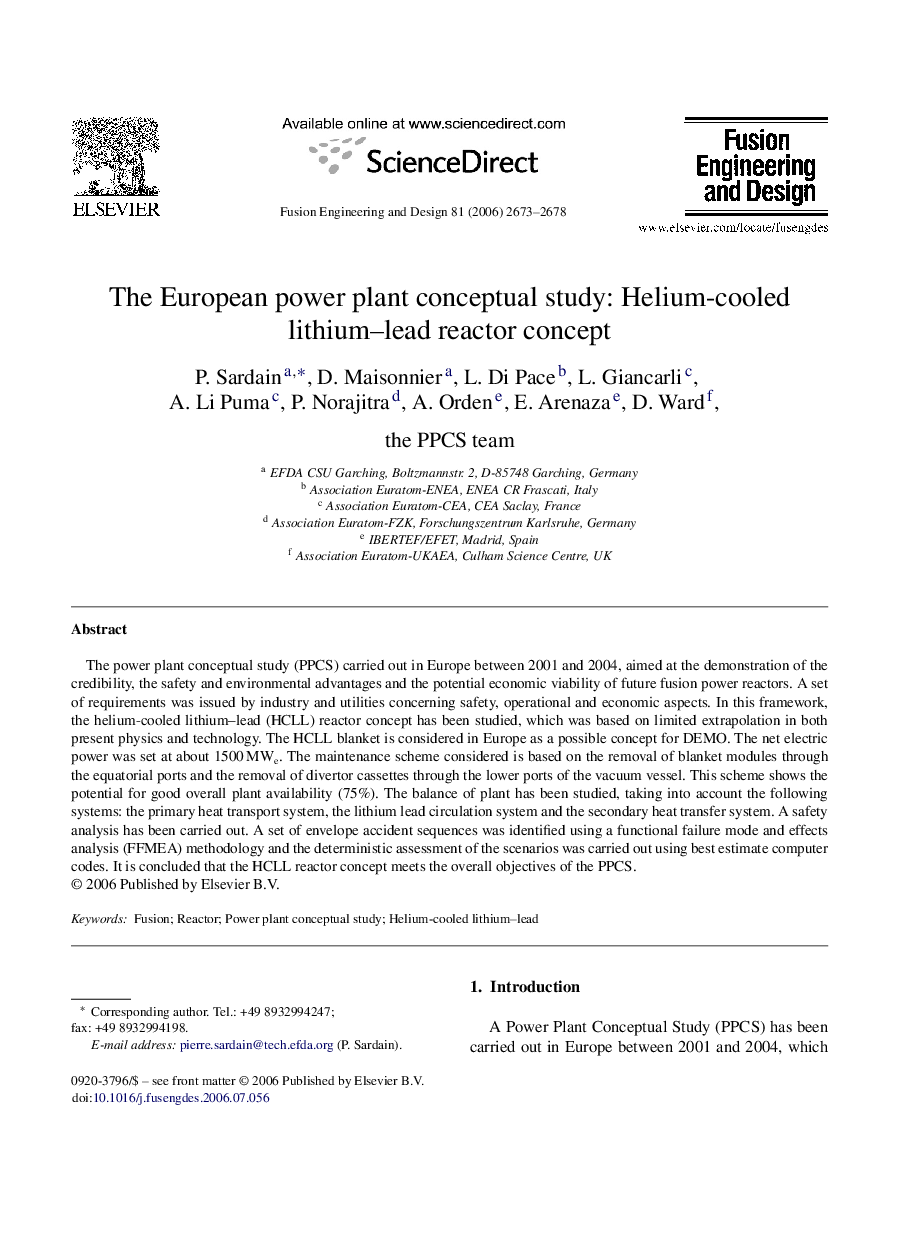| Article ID | Journal | Published Year | Pages | File Type |
|---|---|---|---|---|
| 273674 | Fusion Engineering and Design | 2006 | 6 Pages |
The power plant conceptual study (PPCS) carried out in Europe between 2001 and 2004, aimed at the demonstration of the credibility, the safety and environmental advantages and the potential economic viability of future fusion power reactors. A set of requirements was issued by industry and utilities concerning safety, operational and economic aspects. In this framework, the helium-cooled lithium–lead (HCLL) reactor concept has been studied, which was based on limited extrapolation in both present physics and technology. The HCLL blanket is considered in Europe as a possible concept for DEMO. The net electric power was set at about 1500 MWe. The maintenance scheme considered is based on the removal of blanket modules through the equatorial ports and the removal of divertor cassettes through the lower ports of the vacuum vessel. This scheme shows the potential for good overall plant availability (75%). The balance of plant has been studied, taking into account the following systems: the primary heat transport system, the lithium lead circulation system and the secondary heat transfer system. A safety analysis has been carried out. A set of envelope accident sequences was identified using a functional failure mode and effects analysis (FFMEA) methodology and the deterministic assessment of the scenarios was carried out using best estimate computer codes. It is concluded that the HCLL reactor concept meets the overall objectives of the PPCS.
